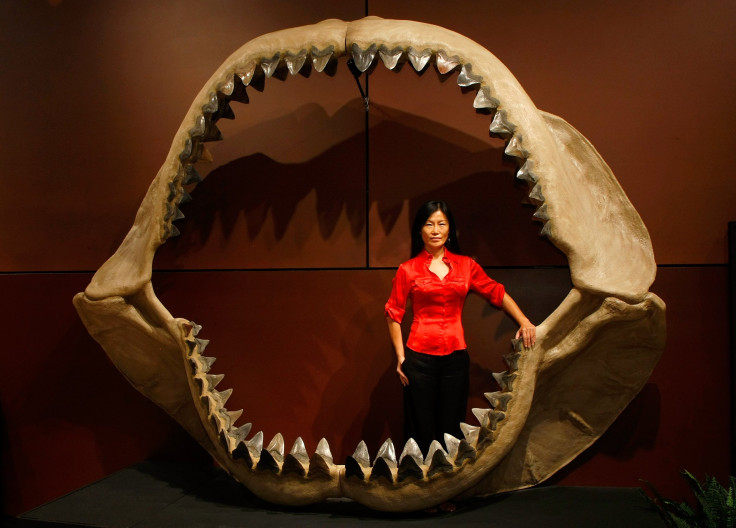Megalodon Shark 2019: How World's Largest Shark Honed Its Lethal, Blade-Like Teeth

The megalodon shark used to tear into its prey with its huge, sharp, serrated teeth, but it didn't get these instant-killing weapons until millions of years after the shark first appeared in the oceans.
According to a new study published in the Journal of Vertebrate Paleontology, Otodus obliquus, the megalodon shark's earliest ancestors that lived between 60 million to 40 million years ago, did not have gigantic bladelike teeth. Instead, they sported three-pronged teeth that they may have used like a fork to grasp and tear fast-moving fish. They later evolved into megatooth shark species that had what scientists call "ultimate cutting tools," which they used to kill and eat bigger prey like dolphins and whales.
Scientists found that it took about 12 million years for their teeth to have evolved into the knife-like ones the megalodons are famously known for.
"This transition was a very long, drawn-out process, eventually resulting in the perfect cutting tool -- a broad, flat tooth with uniform serrations," study lead author Victor Perez, a doctoral student in geology at the Florida Museum of Natural History, said in a statement. "It's not yet clear why this process took millions of years and why this feature was lost."
Perez and his colleagues studied 359 fossils of teeth found on the Calvert Cliffs on the shore of the Chesapeake Bay in Maryland. According to the statement from the Florida museum, this area had been part of the ocean around 20 million to 7.6 million years ago. Now, these dry hills contain fossilized teeth from megalodon and its most immediate ancestor, Carcharocles chubutensis.
While examining their fossils, scientists noticed that the sharks began to lose these three-pronged teeth, or "cusplets," over time. They found that around 87 percent of sharks that lived 20 million to 17 million years ago had these cusplets, but around 14.5 million years ago, only 33 percent of the ocean predators had them.
The cusplets had completely disappeared from the fossils dating back to 7.6 million years ago.
According to Perez, megalodon's teeth suggested that it may have developed a single-strike hunting style wherein it would immobilize its prey and allow it to bleed out. The shark would not have continued to grasp prey in its jaws as the dolphin or whale could have thrashed about and injured it. "It would just become scavenging after that," he said.
Scientists believed that earlier ancestors of the megalodon may have used cusplets for a variety of purposes, so it remains a "mystery" why exactly the species lost them over time.
"We're wondering if something was tweaked in the genetic pathway of tooth development," Perez said.
© Copyright IBTimes 2024. All rights reserved.





















